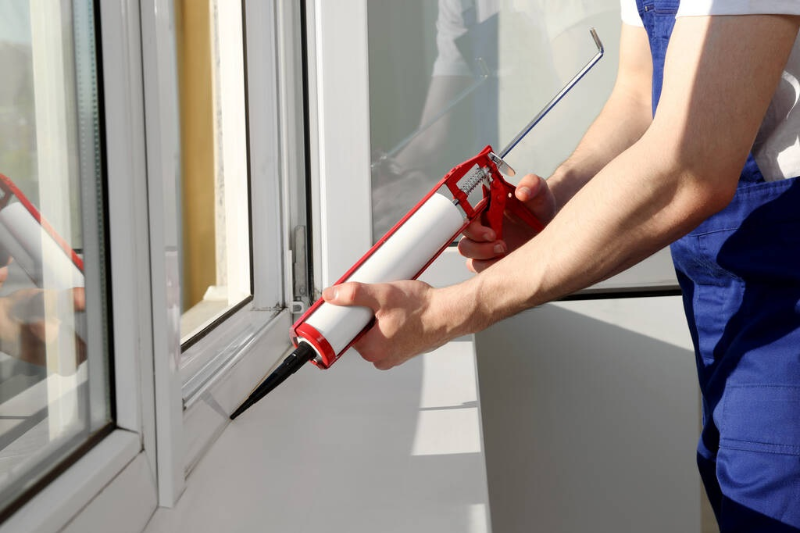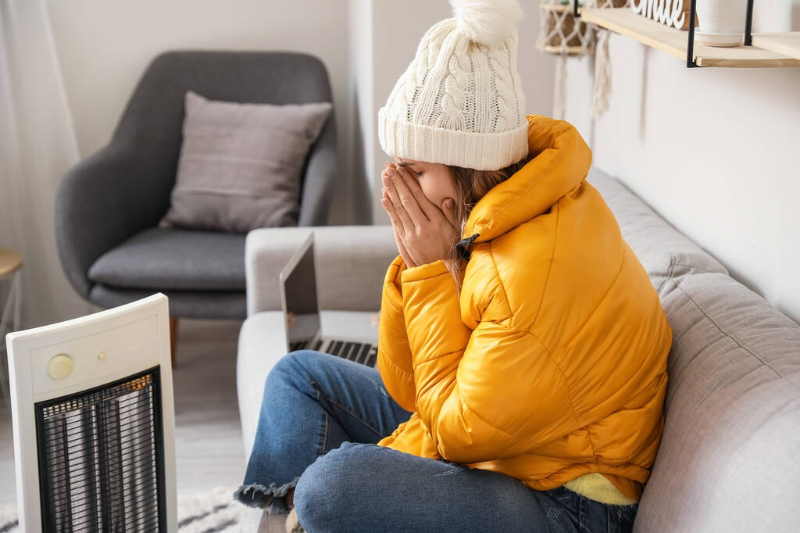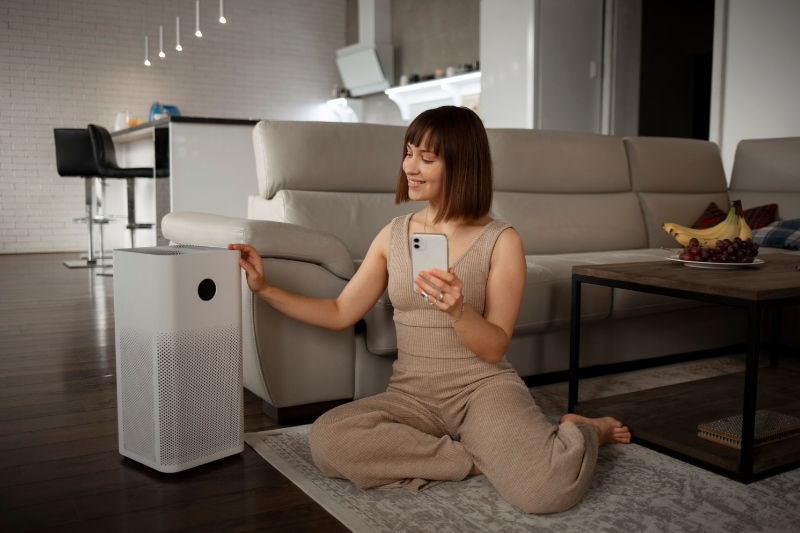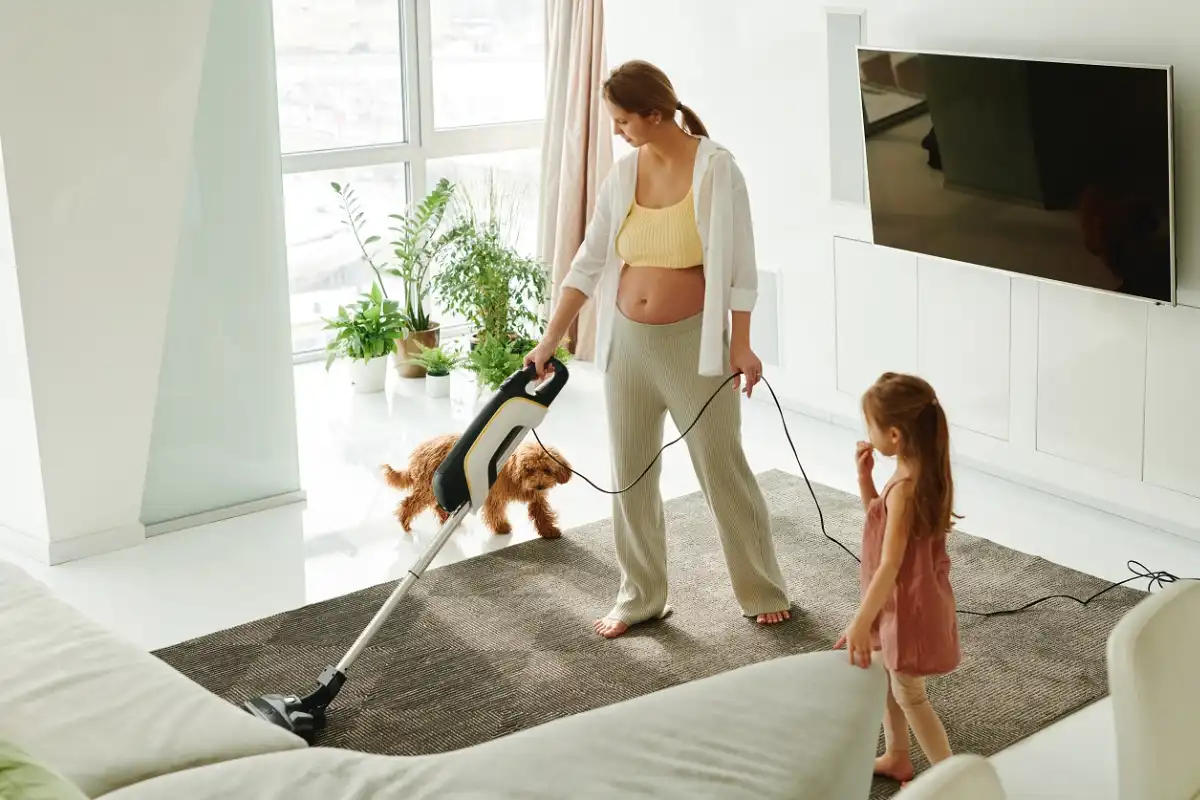Table Of Contents
Winter in Sydney can be surprisingly chilly, making it essential to keep your home warm and cosy. A well-heated home isn’t just about comfort; it’s also crucial for your health and well-being.
In this blog, we’ll discuss practical tips for maintaining a warm home throughout the winter months. We’ve got you covered, from effective insulation to optimising your heating system. Let’s get started!
Insulate your home effectively

Seal gaps around windows and doors
One of the easiest and most effective ways to keep your house warm is by sealing gaps around windows and doors. Drafts can let in cold air, making your heating system work harder.
Use weatherproofing strips or caulk to seal these gaps and keep the warmth inside. Ensuring your property’s windows and doors are properly sealed can make a noticeable difference in maintaining indoor temperatures and reducing energy costs.
Use thermal curtains and blinds
Thermal curtains and blinds are fantastic at trapping heat inside your home. During the day, open them to let in natural sunlight and warmth. At night, close them to keep the heat from escaping through the windows.
These specialised window coverings provide an extra layer of insulation, helping to keep rooms warmer. Investing in good-quality thermal curtains can pay off in the long run by reducing your heating bills and enhancing overall comfort.
Insulate the attic and walls
Proper insulation in your property’s attic and walls can make quite a difference when it comes to maintaining a warm house. Insulation limits the heat that escapes your home, keeping it warmer for longer.
Consider upgrading your insulation if it’s old or insufficient. Effective insulation retains heat and helps keep your home cool during summer, providing year-round benefits. Consult a professional to assess your current insulation and recommend the best materials for your home.
Install weather stripping on doors
Weatherstripping is a simple yet effective way to prevent drafts. Install it around your doors to seal any gaps that might let in cold air. This not only keeps your home warm but also improves energy efficiency.
Weather stripping can be easily installed with adhesive backing, making it a quick fix for improving your home’s insulation. To maintain its effectiveness, regularly check and replace worn-out strips.
Use draft stoppers for extra protection
Draft stoppers are an easy fix for keeping cold air from entering under doors. These can be bought or made at home using rolled-up towels. Place them at the bottom of doors to block drafts and keep your home warmer.
Draft stoppers are particularly useful for older homes with larger gaps under doors. They are inexpensive to clean and can enhance your home’s thermal efficiency without extensive renovations.
Optimise your heating system

Schedule regular maintenance for heating systems
Regular maintenance of your property’s heating system ensures it runs efficiently. Schedule an annual check-up with an expert to clean and inspect your heater. This can prevent breakdowns and improve its performance during the cold months. Regular and professional servicing also extends the lifespan of your heating system, ensuring it remains effective for many winters to come.
Upgrade to a more efficient heater
If your property’s heating system is old, consider upgrading to a more energy-efficient model. Modern heaters are more effective at warming your home and saving you money on energy bills.
Look for models with high energy ratings and advanced features like programmable settings and zone heating. An efficient heater reduces energy consumption and provides consistent warmth, enhancing your overall comfort.
Use a programmable thermostat
A programmable thermostat can assist you in managing your home’s temperature more efficiently. Set it to lower the heat when you’re not home and raise it before you return. This can save energy and lower your heating costs.
Programmable smart thermostats can also be controlled remotely via your smartphone, allowing you to easily adjust the thermostat settings even when you’re away. This convenience ensures your home is always at the perfect temperature without wasting energy.
Keep vents and radiators unobstructed
Ensure that vents and radiators are not blocked by furniture or other objects. Obstructed vents can prevent warm air from circulating correctly, making your heating system work harder to keep your home warm. Check and clean vents regularly to remove dust and debris impeding airflow. Keeping vents clear ensures optimal heating system performance and energy efficiency.
Consider zoning your heating system
Zoning allows you to control the temperature in different areas of your home independently. This zoning of your heating system can be particularly beneficial in larger homes, enabling you to heat only the areas you use most often and save energy.
Installing a zoning system can be a worthwhile investment. It provides targeted heating and reduces energy waste. Each zone can have its own thermostat, giving you precise control over your home’s heating needs.
Make the most of natural heat

Open curtains during the day to let in sunlight
Sunlight is a natural source of heat. During the day, open your curtains to let in as much sunlight as possible. The sun’s rays can help warm up your home naturally, limiting the need for artificial heating.
Positioning furniture to take advantage of sunny spots can also enhance the warming effect. This simple practice can significantly contribute to maintaining a comfortable indoor temperature.
Close curtains at night to retain heat
At night, close your curtains to keep the warmth inside. This helps prevent heat from being lost through the windows and keeps your home cosy throughout the night. Consider using thermal or heavy curtains for added insulation. This minor adjustment can make a big difference in retaining warmth and reducing energy consumption.
Utilise passive solar heating techniques
Passive solar heating involves designing your home to collect, store, and distribute the solar energy as heat. If you’re building or renovating, consider incorporating large, south-facing windows and materials that absorb and retain heat. Materials like concrete, brick, and tile can store solar heat and release it slowly, keeping your home warm after the sun goes down.
Rearrange furniture to maximise warmth
Rearranging your furniture can help improve the circulation of warm air. Keep furniture away from windows and vents to allow heat to flow freely throughout the room. Positioning sofas and chairs near interior walls can create a warmer seating area. Avoid blocking radiators and vents with large pieces of furniture to ensure even heat distribution.
Use heat-retaining materials for flooring and furniture
Materials like carpets, rugs, and upholstered furniture can help retain heat in your home. These materials act as insulators, keeping your floors and rooms warmer. Investing in thick, high-quality rugs and cushions can enhance thermal comfort and add a cosy touch to your living spaces. Wooden and tiled floors can be complemented with underfloor heating systems for added warmth.
Utilise cost-effective heating methods

Use space heaters for targeted warmth
Space heaters are excellent for providing extra warmth in specific areas of your home. Use them in rooms where you spend the most time, like the living room or bedroom, to save on overall heating costs.
Modern space heaters have safety features and energy-efficient modes, making them a convenient and effective option for supplemental heating. However, to prevent hazards, be sure to follow safety guidelines.
Layer up with warm clothing and blankets
Sometimes, the simplest solutions are the best. Wearing warm clothing and making use of blankets can help you stay comfortable without needing to turn up the heat. Opt for layers of natural fibres like wool and cotton, which provide excellent insulation. Keeping cosy with blankets and throws can reduce your reliance on heating and lower energy bills.
Heat only the rooms you use most
Focus on heating the rooms you use most often. Close the doors to rooms that aren’t frequented often to keep the heat concentrated in the areas where you spend the most time. This approach helps reduce energy waste and ensures that your living spaces remain comfortable. Use draft excluders and door snakes to seal off unused rooms and enhance thermal efficiency.
Cook at home to utilise oven heat
Cooking at home can be a cosy way to warm up your kitchen. The heat from your oven can help raise the temperature in your home, providing a dual benefit of a hot meal and a warm house.
Baking and roasting can generate significant warmth, making the kitchen a welcoming space during meal preparation. After cooking, leave the oven door open (if safe to do so) to release the residual heat into your home.
Use hot water bottles or electric blankets
Hot water bottles and electric blankets are cost-effective ways to stay warm at night. They can provide direct warmth, reducing the need to heat your entire home overnight.
Electric blankets offer adjustable heat settings, allowing you to find the ideal temperature for a comfortable sleep. Hot water bottles are a safe and economical option for targeted warmth in bed.
Maintain indoor air quality

Use humidifiers to maintain moisture levels
Winter air can be dry, making your home feel colder. A humidifier adds moisture to the air, making it feel warmer and more comfortable. Maintaining adequate humidity levels can prevent dry skin, irritated throats, and other discomforts associated with dry indoor air. Choose a humidifier with adjustable settings to maintain optimal moisture levels.
Keep indoor plants to improve air quality
Indoor plants can help by improving indoor air quality and adding moisture to the air. They can also make your home feel cosier and more inviting. Plants like peace lilies, spider plants, and snake plants are great for enhancing indoor air quality. They add a touch of nature and beauty to your home while providing health benefits.
Regularly clean air filters
Dirty AC air filters can lower the efficiency of your heating system. Make sure to clean or replace them regularly to keep your unit running smoothly and improve indoor air quality.
Clogged filters can obstruct airflow, causing your heating system to work harder and consume more energy. Regular maintenance ensures clean, healthy air and efficient heating.
Ventilate your home to prevent dampness
Proper home ventilation is crucial to prevent dampness and mould. Open windows occasionally to let in fresh air and reduce humidity levels. Use exhaust fans in the ceilings of kitchens and bathrooms to eliminate excess moisture. Balanced ventilation helps maintain a healthy indoor environment, preventing issues like condensation and mildew.
Monitor indoor air quality with sensors
Using air quality sensors can help you keep track of the air quality in your home. This can be particularly important during winter when windows are often closed, and indoor air quality can suffer.
Sensors can detect pollutants, humidity levels, and temperature, providing valuable data to ensure a healthy living environment. Invest in a reliable air quality monitor to stay informed and take necessary actions.
Additional tips for a cosy home

Use rugs and carpets to insulate floors
Rugs and carpets can add an additional layer of insulation to your floors, making your home feel warmer. They can also add a touch of cosiness to your décor. Choose thick, plush rugs for high-traffic areas and smaller, decorative rugs for added warmth in bedrooms and living rooms. Carpets provide a soft, warm surface that enhances comfort and reduces heat loss through floors.
Install double-glazed windows
Double-glazed windows provide better insulation than single-pane windows. They help keep the heat in and the cold out, making your home more energy-efficient. Double glazing reduces heat transfer, minimises drafts, and enhances overall thermal comfort.
Consider upgrading your windows to double glazing for long-term energy savings and improved indoor climate control.
Use energy-efficient lighting
Energy-efficient lighting, like LED bulbs, produces less heat than traditional bulbs. This can help limit your overall energy consumption and keep your home warm without overheating.
Light-emitting diodes (LEDs) are available in various colour temperatures, allowing you to transform your home ambience into one that is both warm and inviting. They also have a longer lifespan and lower overall energy usage, making them an excellent choice for sustainable living.
Create cosy spaces with throws and pillows
Adding throws and pillows to your living spaces can create a warm and inviting atmosphere. These small touches can make a big difference in your home’s cosy. Opt for soft, plush materials like fleece and wool for maximum comfort. Layering throws on sofas and beds adds warmth and texture, making your home a haven of comfort during winter.
Ensure your chimney is sealed when not in use
If you have a fireplace, make sure the chimney is properly sealed when not in use. An open chimney can let in cold air and cause drafts, making it harder to keep your home warm.
Use a chimney balloon or cap to seal off unused chimneys, preventing heat loss and improving energy efficiency. Regularly inspect your chimney to ensure it remains secure and draft-free.
Wrapping up
Keeping your house warm in winter doesn’t have to be a daunting task. By following these tips, you can ensure your home stays cosy and comfortable all season long. Proper insulation, an optimised heating system, and making the most of natural heat can go a long way in maintaining warmth.
Don’t forget to explore cost-effective methods and maintain good indoor air quality to enhance your living environment. If you need professional assistance with your heating system or insulation, consider contacting a reliable service provider. Staying warm and cosy in winter is essential, and you can achieve that with the proper measures.



